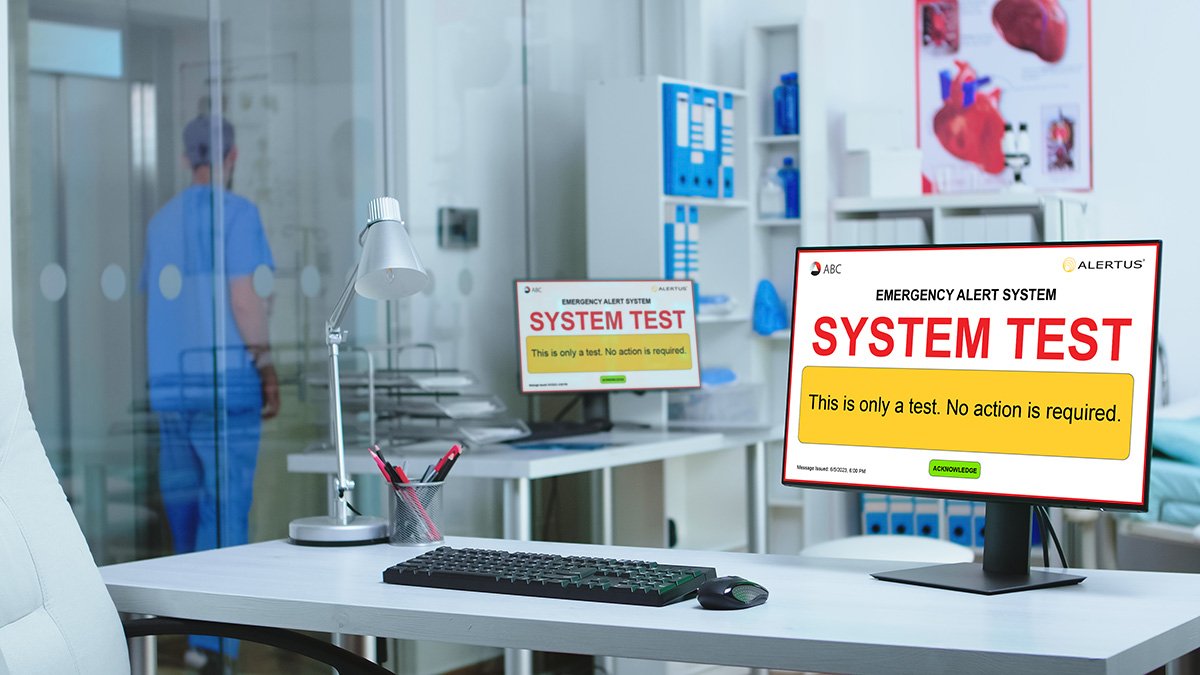Three Steps Healthcare Institutions Can Take to Respond Faster in Emergencies
By Kara Stamets, Content Marketing Specialist, Alertus Technologies
To ensure a safe environment for staff, patients, and visitors, healthcare facilities must plan and prepare for sudden emergencies like active shooters, disgruntled visitors or patients, and weather-related disasters. To respond appropriately to these crises, a unified mass notification system (MNS) can save time by quickly distributing notifications to all intended audiences.
Read on as we provide three steps healthcare organizations can take to respond faster in any type of emergency by leveraging an MNS.
Step One: Utilize One-Step System Activation
Are you losing valuable time locating and activating multiple, disparate notification systems during an emergency? Unifying your system to have a single activation point will streamline and accelerate your alerting process so you can reach your employees, patients, and visitors faster.
Adding scenario-specific, one-touch activation buttons to your MNS will unify your systems into one singular process to activate preset alerts and trigger notifications to integrated products. Panic buttons, VoIP and IP phones, and mobile apps are extremely useful and versatile for enabling simple and quick full-system activation.
Step Two: Evaluate Your Facilities Unique Mass Notification Needs
When evaluating your system, ask yourself: Does our system quickly reach intended audiences across the facility? How were response times? Do we need to fill in gaps in coverage?
Healthcare facilities range from small offices to large networks with multiple buildings and centers. Many healthcare organizations utilize overhead paging systems to reach employees, but this can limit notification reach and delay action and response from employees, so it is important to evaluate different types of solutions that may work best for your organization.
To reach employees across various locations, Ridgecrest Regional Hospital, for example, utilizes Alertus Desktop™ Notification to distribute alerts to doctor and nurse station computers in select buildings across their 18-acre campus. Further, depending on the type of healthcare environment, such as in an emergency room, it is critical to consider discreet notification solutions so as not to panic patients and exceed building noise standards. Ridgecrest also uses the Alertus Recipient App, which allows users to receive push notifications privately to tablets or mobile phones.
Step Three: Train Your Staff and Implement Frequent System Testing
Now that you have unified your system and chosen solutions that work best for your facility, train your staff members on alert activation to ensure no confusion arises. Every minute counts, so forming an emergency response team and creating a clear plan of action will save precious time in tense situations.
Stress levels rise during emergencies and at Anderson Hospital, they automated and color-coded their alerts by emergency-type, to decrease the chance of error. Doing so removed the burden of rapid decision-making from busy administrators and nurses.
Testing your system regularly is also critical to verify that it is working properly and will be on and ready when needed. Anderson Hospital conducts regular system tests that help train their users with daily practice providing comfort knowing their system is functioning as intended.
With system training and testing, you can have peace of mind knowing that your employees are well-versed in how the system works, can activate the system if needed, and fix any issues discovered during regular testing. Continually using your system will also increase reaction times, enhancing response during real emergencies.
If you find yourself questioning the speed and effectiveness of your MNS, consider scheduling a demo with an Alertus representative today. We can provide you with many integrations and solutions to enhance and get the most out of your system.



